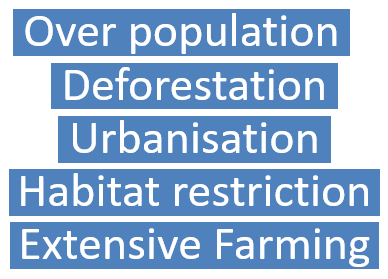A joint report by World Wide Fund for nature and UNEP has declared that India will be most affected country by the Human Animal conflict. Explain the reasons behind this and also suggest suitable measures to reduce its impact.
Introduction:
The wildlife is at continuous threat by the Human-Animal Conflict. This has endangered many organisms. Some of the organisms have also become extinct due to this. The continuous rise in human population can be considered as the key cause of this problem.
Body:
An alarming report has been given by the World Wide Fund and United Nations Environment Programme that India will be most-affected by the Human-Animal conflict in the coming years. Some of the world’s most iconic species are present in India such as Asiatic Elephant. In a span of 5 years around 500 elephants have been killed by humans. Other than elephants there are animals like lions, tigers, one-horned rhinos which are in the verge of becoming endangered species.
Causes of conflict:
Measures to control and resolve:
Human-wildlife conflict Task force has been constituted
It acts as advisory and facilitator to resolve the conflicts including capacity building, workshops, resource accumulation.
There are various activities conducted by NGO’s and international organisations to educate people on how to live with those organisms such that they are mutually not harmful to each other.
Conclusion:
Humans being the most advanced organisms on earth due to their intellect should behave in a way that suits them. People need to be more considerate when it comes to saving organisms. Killing should be the last option. Implementation of animal laws is not at all considered important thus contributing for death of these organisms




